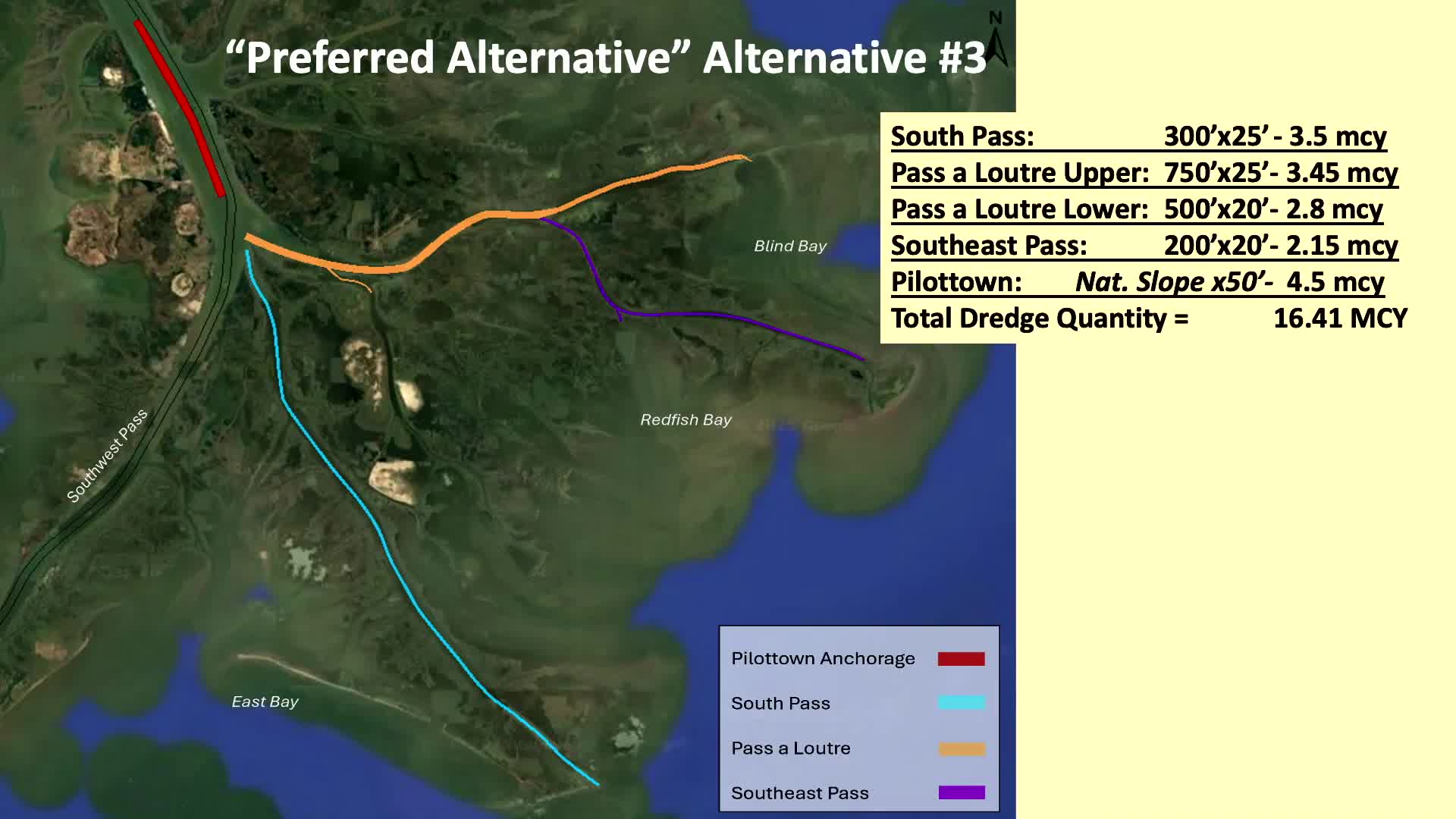Project aims to enhance Puyallup Town navigation by removing sediment
May 16, 2025 | Coastal Protection and Restoration Authority Board, Boards & Commissions, Organizations, Executive, Louisiana
This article was created by AI summarizing key points discussed. AI makes mistakes, so for full details and context, please refer to the video of the full meeting. Please report any errors so we can fix them. Report an error »

In a pivotal meeting held on May 16, 2025, the Coastal Protection and Restoration Authority (CPRA) Board of Louisiana gathered to discuss significant developments in sediment management and navigation channel improvements. The atmosphere was charged with anticipation as board members reviewed a comprehensive plan aimed at enhancing the Puyallup Town anchorage, a critical area for both ecological restoration and navigation.
The discussion centered around a proposed budget of approximately $165 million, targeting the removal of sediment from the Powlettown Anchorage. The modeling results indicated that dredging about 4.5 million cubic yards of sediment could not only benefit the ongoing restoration project but also improve navigation channels, a dual advantage that resonated with the board members. The estimated costs for the project range between $145 million and $176 million, allowing for flexibility as the project progresses toward its 2028 timeline.
As the meeting unfolded, the complexities of the project became evident. Board members highlighted the need for thorough surveys to identify potential archaeological sites and existing oil and gas infrastructure that could be impacted by dredging activities. The historical significance of the area, once home to original shipping channels, raised concerns about potential shipwrecks and the preservation of old settlements.
A key point of discussion was the longevity of the project, particularly in light of ongoing dredging operations by the Corps of Engineers. The board emphasized the importance of understanding how sediment disposal practices could affect the sustainability of the newly created land. Collaborative efforts with the Corps were acknowledged, with gratitude expressed for their support in providing vital information.
In a hopeful conclusion, the board members recognized the project as a "win-win-win," poised to create wetlands, enhance navigation, and reduce dredging needs on the lower Mississippi River. The meeting underscored the critical role of stakeholder engagement, with plans to continue outreach to various agencies, including the U.S. Fish and Wildlife Service, to refine sediment placement strategies.
As the session wrapped up, the board left with a renewed sense of purpose, committed to advancing a project that promises to restore vital habitats while addressing the pressing needs of navigation and sediment management in Louisiana's dynamic coastal landscape.
The discussion centered around a proposed budget of approximately $165 million, targeting the removal of sediment from the Powlettown Anchorage. The modeling results indicated that dredging about 4.5 million cubic yards of sediment could not only benefit the ongoing restoration project but also improve navigation channels, a dual advantage that resonated with the board members. The estimated costs for the project range between $145 million and $176 million, allowing for flexibility as the project progresses toward its 2028 timeline.
As the meeting unfolded, the complexities of the project became evident. Board members highlighted the need for thorough surveys to identify potential archaeological sites and existing oil and gas infrastructure that could be impacted by dredging activities. The historical significance of the area, once home to original shipping channels, raised concerns about potential shipwrecks and the preservation of old settlements.
A key point of discussion was the longevity of the project, particularly in light of ongoing dredging operations by the Corps of Engineers. The board emphasized the importance of understanding how sediment disposal practices could affect the sustainability of the newly created land. Collaborative efforts with the Corps were acknowledged, with gratitude expressed for their support in providing vital information.
In a hopeful conclusion, the board members recognized the project as a "win-win-win," poised to create wetlands, enhance navigation, and reduce dredging needs on the lower Mississippi River. The meeting underscored the critical role of stakeholder engagement, with plans to continue outreach to various agencies, including the U.S. Fish and Wildlife Service, to refine sediment placement strategies.
As the session wrapped up, the board left with a renewed sense of purpose, committed to advancing a project that promises to restore vital habitats while addressing the pressing needs of navigation and sediment management in Louisiana's dynamic coastal landscape.
View full meeting
This article is based on a recent meeting—watch the full video and explore the complete transcript for deeper insights into the discussion.
View full meeting
